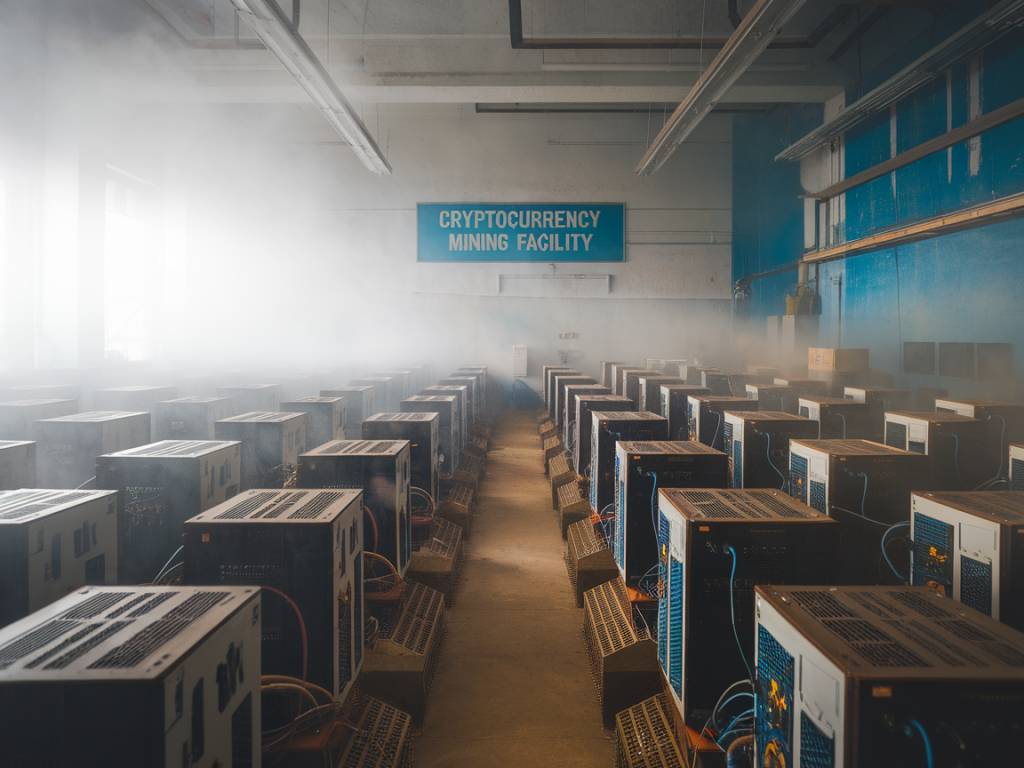Unveiling the Hidden Environmental Costs of Cryptocurrency Mining
Hey there, I’m Sean, your friendly neighborhood crypto enthusiast with a knack for digging up the unknown! We all know that cryptocurrency mining has become quite the buzzword over the past few years. It’s all about blockchain, cryptographic puzzles, and, of course, the lure of digital riches. But beneath all that virtual gold lies a rather hidden and somewhat surprising environmental story that doesn’t always make the headlines. So, let’s dig in!
The Energy Guzzler That Is Crypto Mining
Alright, let’s start with the basics. When you think of cryptocurrency mining, the image of servers whirring away in a dimly lit room might pop into your head. But did you know that these seemingly innocent machines are real energy hogs? The power consumed by the Bitcoin network alone could light up entire countries for a year!
Cryptocurrency mining, particularly Proof-of-Work (PoW) cryptocurrencies, requires miners to solve complex mathematical problems to validate transactions. This process demands enormous computational power, which, in turn, translates to massive energy consumption. In fact, some studies have shown that Bitcoin mining consumes more electricity annually than entire nations like Argentina or the Netherlands. Isn’t that mind-boggling?
E-Waste: The Silent Culprit
While we’ve all heard the tales of massive energy consumption, not much is said about the aftermath of the mining hardware itself. Ever pondered what happens to all those high-powered machines when they become obsolete? Enter e-waste, the less glamorous but equally concerning environmental headache.
As miners race to stay ahead of the competition, they continuously upgrade to more efficient and powerful machines, leaving behind a mountain of electronic waste. Unlike your household e-gadgets, these mining rigs aren’t easy to recycle. They contain specialized components that complicate the recycling process, contributing to the growing e-waste problem. Who knew that your digital coin could leave such a tangible mess?
The Carbon Footprint of Mining Farms
If you’ve ever thought about setting up your own mining operation, you might picture a small setup in your garage. Well, think bigger. Much, much bigger. We’re talking about industrial-scale mining farms that can house thousands of mining rigs working round the clock. These behemoths need not just a sip but a chug of power, often sourced from non-renewable energy.
So, what’s the result? A sizable carbon footprint that rivals that of some major industries. These mining farms are often located in regions with cheap but not-so-green energy sources. In places like China, Kazakhstan, and Russia, coal-fired power plants are a go-to choice for powering these massive mining operations. Burning coal, as we know, is a major contributor to greenhouse gas emissions. So, there’s an invisible trail of smoke that our digital coins leave behind.
Water Woes: The Unseen Impact
Hold on; it gets more intricate! Let’s talk about water. Yes, water. Cryptocurrency mining facilities generate a significant amount of heat, and cooling these super-charged mining rigs isn’t as simple as turning on an air conditioner. Many mining farms use water for cooling, which then gets discharged back into the environment.
The discharged water isn’t always the cleanest when it re-enters natural water bodies. It can contain harmful chemicals and metals picked up from the mining equipment. Plus, in areas where water resources are already scarce, this additional strain can lead to conflicts and environmental degradation. So, from circuits to streams, crypto mining’s impact flows far and wide.
Development of Energy-Efficient Cryptos
Not all is doom and gloom, though. The crypto community isn’t resting on its laurels. There’s a growing movement towards more energy-efficient cryptocurrency models. Ever heard of Proof-of-Stake (PoS)? It’s one of the newer, greener alternatives to the traditional Proof-of-Work model.
PoS drastically reduces the need for high computational power by allowing validators to propose new blocks and validate transactions based on the number of coins they hold and are willing to « stake » as collateral. Ethereum, one of the largest cryptocurrencies, has been making strides to transition to a PoS model with Ethereum 2.0. Such initiatives could significantly curb the energy consumption and environmental impact of crypto mining.
Switching to Renewable Energy
Another positive trend is the growing interest in renewable energy sources for mining operations. Some innovative companies and mining farms are setting up shop in places with abundant renewable energy, like Iceland (geothermal energy) or certain parts of the U.S. with solar and wind power. Not only does this make mining more sustainable, but it also often cuts down on energy costs in the long run. Renewable energy could well be the way forward for making cryptocurrency mining more palatable for our planet.
What Can You Do?
By now, you’re probably wondering what all this means for the everyday crypto enthusiast. Here are a few steps you can take to make your journey in the crypto world a bit greener:
- Support Green Cryptos: Choose cryptocurrencies that are committed to eco-friendly practices or are based on Proof-of-Stake mechanisms.
- Consider Your Energy Source: If you’re mining at a small scale, think about using renewable energy sources like solar panels. Not only will it reduce your carbon footprint, but it could also save you some bucks!
- Engage in Responsible Disposal: If you decide to upgrade your mining hardware, make sure to dispose of the old equipment responsibly. Look for e-waste recycling programs in your area.
- Spread Awareness: The more people are aware of these hidden environmental impacts, the better. Share this knowledge with fellow crypto enthusiasts to promote more sustainable practices.
In the grand scheme of things, every bit of effort counts. The cryptocurrency wave is far from over, but we can certainly steer it towards a more sustainable future. Until next time, happy mining!
Cheers,
Sean

